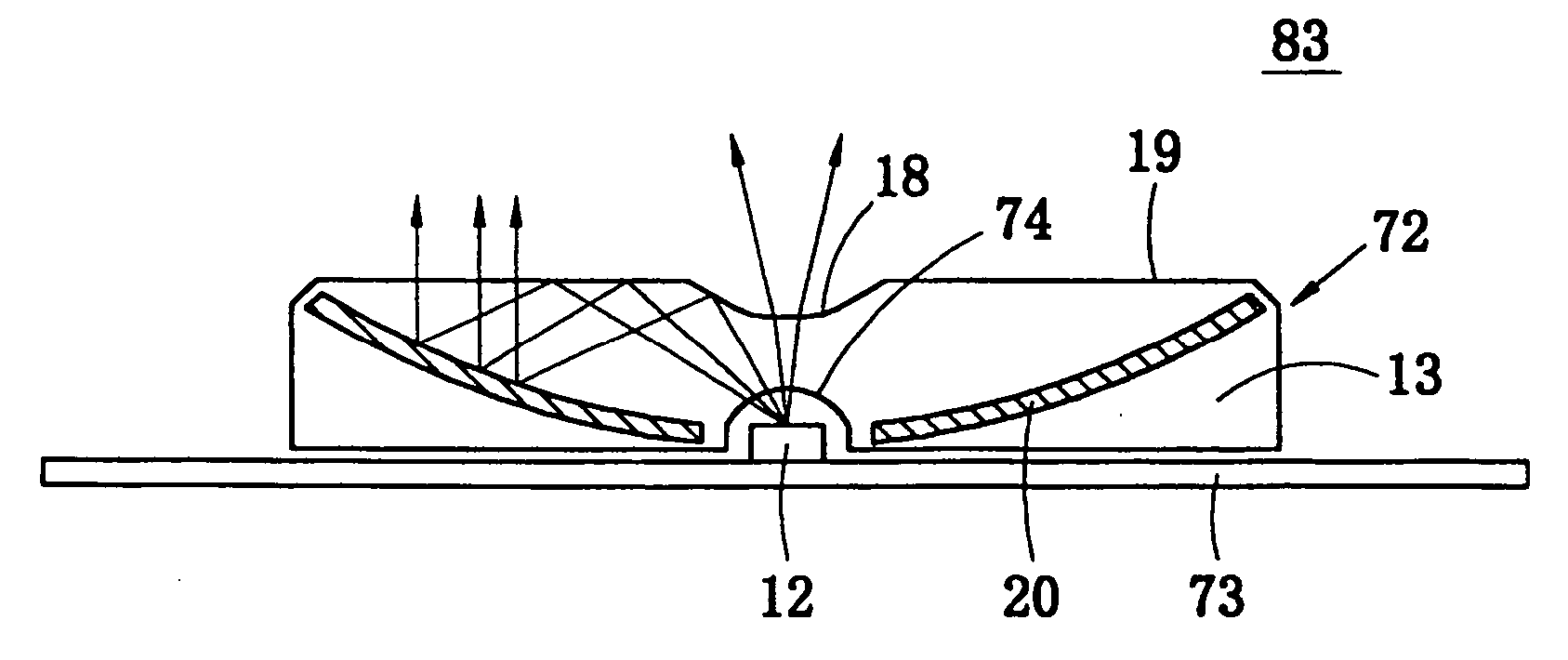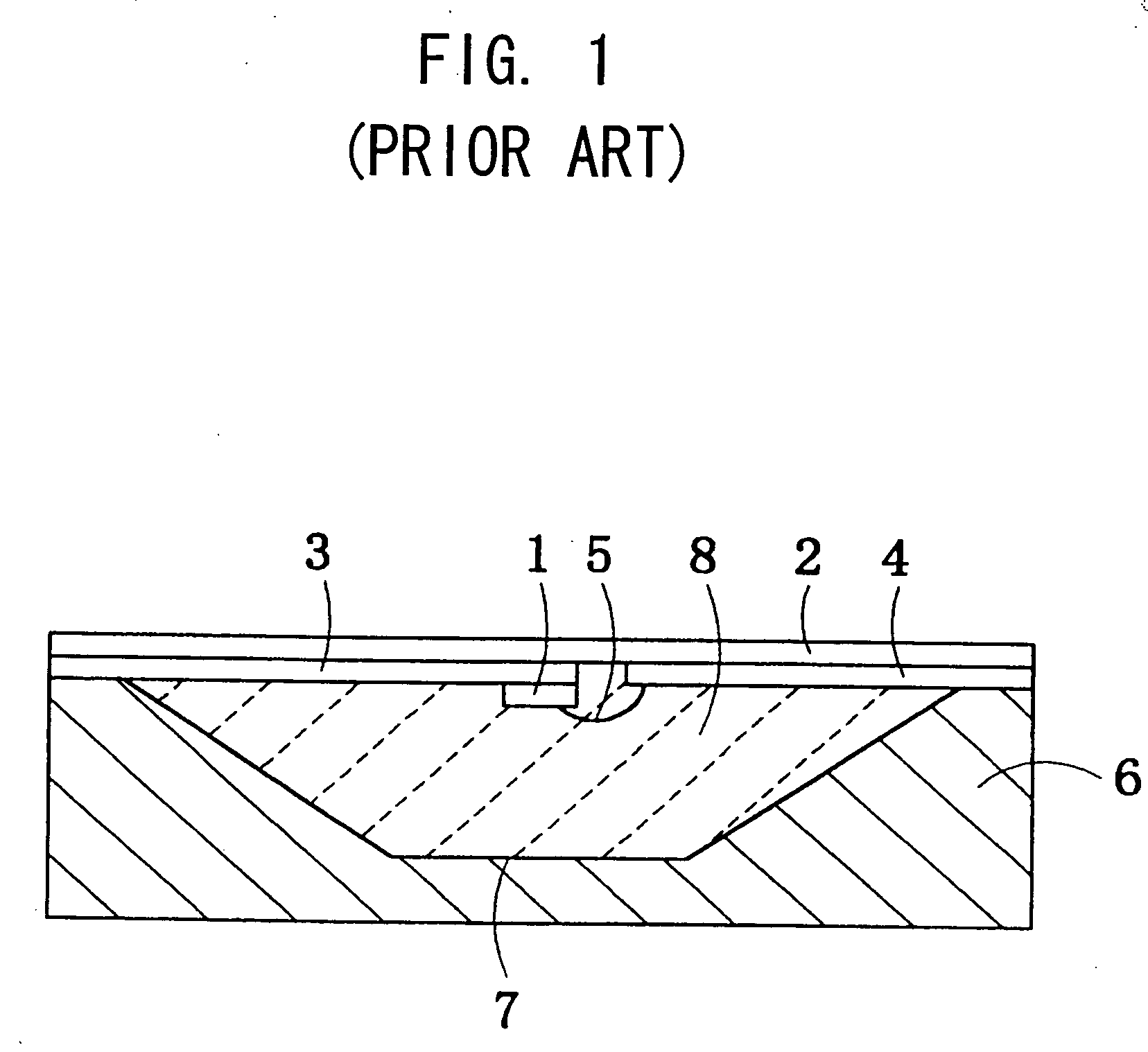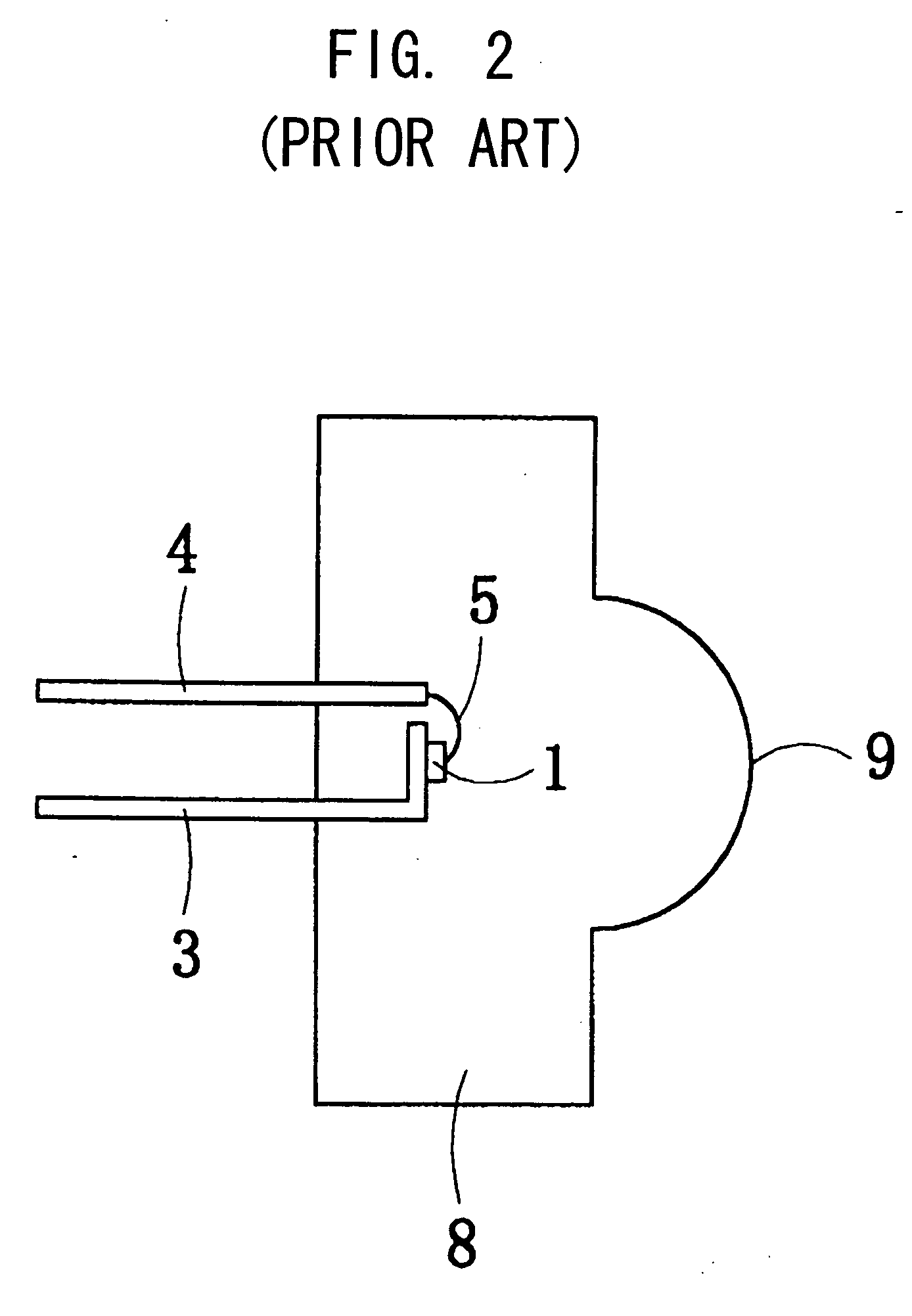Transparent optical component for light emitting/receiving elements
a technology of light emitting/receiving elements and transparent optical components, which is applied in the direction of solid-state devices, signalling/lighting devices, discharge tubes/lamp details, etc., can solve the problems of deteriorating the advantage of utilization, poor appearance, and deteriorating the use efficiency of light, so as to achieve the positional accuracy of the light reflecting member. , the effect of easy operation
- Summary
- Abstract
- Description
- Claims
- Application Information
AI Technical Summary
Benefits of technology
Problems solved by technology
Method used
Image
Examples
tenth embodiment
[0234]FIG. 16 is a sectional view of a light emission source 30 according to a tenth embodiment. In the light emission source 30 of this embodiment, a lens configuration of a lens-shaped direct emission region 18 is formed to be a Fresnel lens to decrease the thickness of the direct emission region 18 or the light emission source 30.
eleventh embodiment
[0235]FIG. 17 is a sectional view of a light emission source 31 according to an eleventh embodiment. In the light emission source 31 of this embodiment, a rear face of a mold resin 13 is formed to include a Fresnel lens on a surface of which a light reflecting portion 20 is formed. In this embodiment, the thickness of the light emission source 31 can be reduced.
twelfth embodiment
[0236]FIG. 18 is a sectional view of alight emission source 32 according to a twelfth embodiment. In this embodiment, a mirror 33 is disposed near a light emitter 12 within a mold resin 13 so as to reflect the light emitted sideway from the light emitter 12 toward a total reflection region 19. The light reflected by the mirror is totally reflected by the total reflection region 19, and further reflected by a light reflecting member 20 to be emitted forward from the total reflection region 19. If desired, the mirror 33 may be formed on an inner wall of a stem 15 (see FIG. 24).
[0237] According to this embodiment, the light emitted sideway in the light emitted from the light emitter 12 is directly reflected by the light reflecting portion 20 to be avoided from becoming lost light, whereby the light emitted in a side direction is effectively used and the use efficiency of light emitted from the light emitter 12 is further improved.
PUM
 Login to View More
Login to View More Abstract
Description
Claims
Application Information
 Login to View More
Login to View More - R&D
- Intellectual Property
- Life Sciences
- Materials
- Tech Scout
- Unparalleled Data Quality
- Higher Quality Content
- 60% Fewer Hallucinations
Browse by: Latest US Patents, China's latest patents, Technical Efficacy Thesaurus, Application Domain, Technology Topic, Popular Technical Reports.
© 2025 PatSnap. All rights reserved.Legal|Privacy policy|Modern Slavery Act Transparency Statement|Sitemap|About US| Contact US: help@patsnap.com



